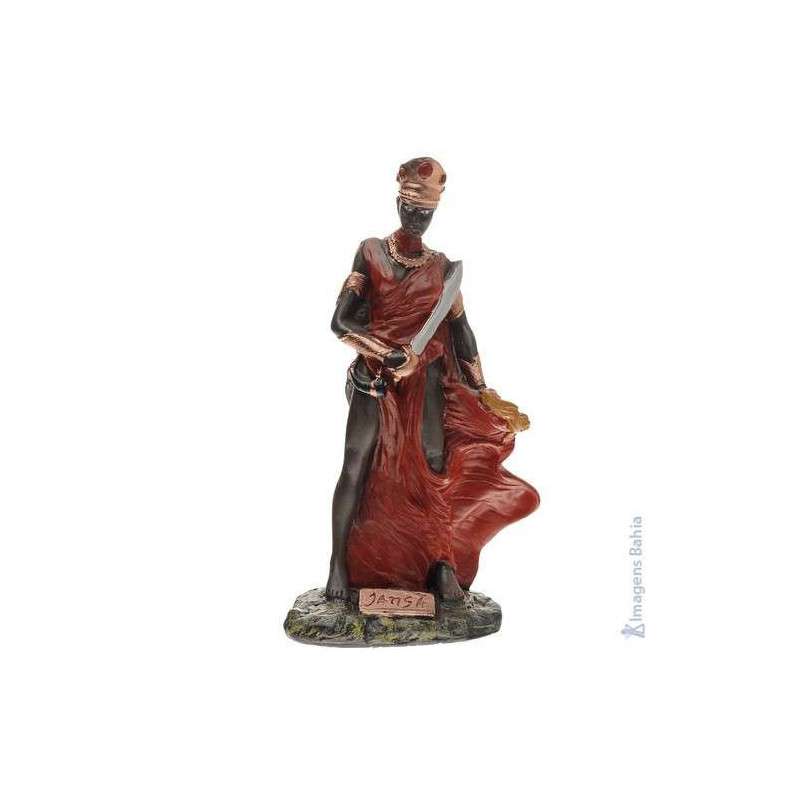



Image of Iansa
Material: Hand-painted plaster.
Size: Approximately 10 cm tall.

Security policy

Delivery policy
Originating from the people who occupied the sub-Saharan territory today corresponding to Nigeria, Togo and Sierra Leone, the goddess is part of the Yoruba pantheon, a rich religious tradition that encompasses several deities associated with aspects of nature and human life.
According to this mythology, Iansã is the daughter of Iemanjá and Oxalá, and has as brothers Oxum, Obá and Oxóssi.
Obstinate and courageous goddess, she has two husbands: Ogun, the hunter, and Xangô, the lord of fire. With her two husbands, she approached battles, becoming an iabá (female orixá) associated with war.
Her name, Oyá, came from a river in Nigeria where her cult originated, currently called the Niger River. The nomenclature Iansã, in turn, means "mother of the pink sky" or "mother of the evening". Xangô, called her that way, because he considered her radiant as the evening.
Over the centuries, the Yoruba religion was brought to Brazil by enslaved Africans, who maintained their religious beliefs and practices even under the yoke of oppression.
In the context of the African diaspora, there was a process of religious syncretism, in which Yoruba deities were associated with Catholic saints, seeking to preserve their traditions in disguise.
In this context, Iansã was assimilated to the figure of Santa Bárbara, resulting in a fusion of symbols and rituals.
Characteristics of Iansã
Oiá is an iabá related, above all, to the air element. She has the power to control and direct the winds, bringing changes and transformations. Her storms represent her ability to purify and renew.
The goddess is also associated with lightning and thunder. Lightning is seen as her weapon, a symbol of her destructive power, but also of her relentless justice. Thunder announces her presence and intensifies her energy.
Iansã is considered a protector, both in everyday life and in the spiritual and emotional fields. According to tradition, she defends her followers against negative influences, bringing security and balance. Her protective energy is often invoked to ward off dangers and offer shelter.
She is also linked to the cult of the dead. According to mythology, the goddess received from Obaluaiê the responsibility of guiding the souls of the deceased (eguns) to one of the nine heavens, according to their actions in life. To protect herself from these spirits, she received an eruexin (a kind of feather duster made from animal tail hair) from Oxossi.
Iansã in Candomblé and Umbanda
The goddess of the Niger River is worshiped in Brazil by religions of African origin, especially Candomblé and Umbanda. Although there are some differences in her cults, both traditions recognize Iansã as an orixá of great importance and power.
Both in Candomblé and Umbanda, the cult of Iansã is marked by reverence, respect and the search for its transforming energy. She is seen as a warrior deity who brings courage, protection and direction in times of challenge.